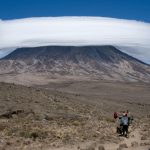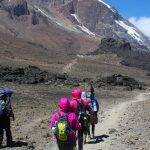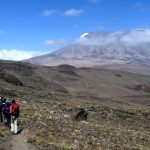- Category
- Transport4×4 safari Land cruiser/Safari Minivan
- ActivitiesClimbing, Hiking, Trekking
The Rongai route is the only route that approaches Kilimanjaro from the north, close to the Kenyan border. Though gaining popularity amongst climbers, Rongai has low traffic. It is the preferred route for those looking for an alternative to the crowded Marangu route, for those who would like a more remote hike, and for those who are climbing during the rainy season (the north side receives less precipitation).
Arrive anytime at Kilimanjaro International Airport (JRO) or from a Nairobi shuttle transfer, there will be transferred to your hotel in Moshi for your overnight.
The best months for Climbing Mount Kilimanjaro
Normally April and May are the months with long rains and should be avoided.
November is usually short rains but it is not often rains all day.
The best time for climbing mount Kilimanjaro is January to February and September.
July to August can be colder and November to December can be wetter.
January to March is the warmest months, almost clear of clouds each evening and morning.
The success rates with our guides are outstanding compared to the overall success rates for all climbers who attempt to reach the top.




